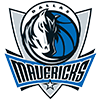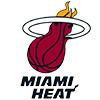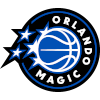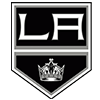Laundry makes comparing players so easy. Too easy.
Doug McDermott is a future Kyle Korver because they have both donned Creighton jerseys. Nerlens Noel was Anthony Davis because they were long, Kentucky shot blockers. Brandon Knight, a high recruit and a Kentucky point guard, even got the John Wall comparisons, just because he won under John Calipari.
We always seem to associate players who played at the same school, even if the similarities are more superficial than anything else. And now, it seems like everyone is doing the same with UCLA guard Zach LaVine.
LaVine is having a fabulous freshman season in his first year on campus. He's an athletic freak, a tremendous shooter with range all the way out to San Diego, and an intense finisher around the rim. He's scored in double digits in nine of his 12 games played and now averages a highly efficient 12.8 points per game in 25.8 minutes a night. He's even made his way onto the Julian Edelman All-Stars for athletes who sound like they should be Jewish, but are not (say hi to David Eckstein while you're there). But now, as would happen with most athletic, UCLA guards, the Russell Westbrook comparisons are coming with all their inaccuracy.
Really, the Westbrook comp is a bit lazy. In some ways, it makes sense. Both LaVine and Westbrook are UCLA guards. Both are hyper athletic and explosive players. Both finish around the rim with vigor. Both get so high so quickly on
Laundry makes comparing players so easy. Too easy.
Doug McDermott is a future Kyle Korver because they have both donned Creighton jerseys. Nerlens Noel was Anthony Davis because they were long, Kentucky shot blockers. Brandon Knight, a high recruit and a Kentucky point guard, even got the John Wall comparisons, just because he won under John Calipari.
We always seem to associate players who played at the same school, even if the similarities are more superficial than anything else. And now, it seems like everyone is doing the same with UCLA guard Zach LaVine.
LaVine is having a fabulous freshman season in his first year on campus. He's an athletic freak, a tremendous shooter with range all the way out to San Diego, and an intense finisher around the rim. He's scored in double digits in nine of his 12 games played and now averages a highly efficient 12.8 points per game in 25.8 minutes a night. He's even made his way onto the Julian Edelman All-Stars for athletes who sound like they should be Jewish, but are not (say hi to David Eckstein while you're there). But now, as would happen with most athletic, UCLA guards, the Russell Westbrook comparisons are coming with all their inaccuracy.
Really, the Westbrook comp is a bit lazy. In some ways, it makes sense. Both LaVine and Westbrook are UCLA guards. Both are hyper athletic and explosive players. Both finish around the rim with vigor. Both get so high so quickly on dunks. Both can outrun everyone in transition. But still, LaVine's style isn't exactly comparable to Westbrook's.
Westbrook played off the ball plenty at UCLA, lining up next to former Bruin Darren Collison in the backcourt. But still, he was a primary ball handler. He was a point guard. You knew he projected as a 1 at the next level. He thrived as a defender. He didn't shoot much or run off screens at all. Athletically, LaVine and Westbrook are similar, but stylistically, they're different players.
Ultimately, LaVine is someone who will play off the ball. UCLA coach Steve Alford loves to run him off screens – and why not? The kid has been one of the most efficient players in the country acting mainly as a catch-and-shoot and transition player. LaVine's 65 percent true shooting isn't something you often see from a freshman. Neither is his 43 percent three-point shooting on 4.1 long-range attempts per game. But it's happening.
It's almost like Alford treats LaVine like some strange hybrid between Ray Allen and Corey Brewer. In the halfcourt offense, LaVine basically runs off screens constantly. His objective is to get a catch-and-shoot opportunity, mainly because if you can get him even slightly open for a shot in rhythm, there's a pretty good chance the ball is going to go in the hoop. Unlike with Westbrook, penetrating into the paint is a secondary option. LaVine can do it and because he's so athletic, he can do it effectively, but it's not preferable. It's almost never the first option, especially in an offense that employs standouts and ball handlers like Kyle Anderson and Jordan Adams.
Then there's the Corey Brewer in him. Maybe it's an effect of Alford making a conscious effort to play a faster tempo in his first year at UCLA, but LaVine leaks out as much as anyone else in the college game on defensive rebounding opportunities. That's part of why he pulls down only 9.5 percent of available rebounds even with his 6-foot-5 height and superior leaping ability.
There's a strange changing of the guard going on at UCLA, some sort of perceived forced culture transformation – and that's not just a transformation from what UCLA used to be. It's also a transformation from what Alford once was at New Mexico.
Remember the recent history here. Alford consistently played a slow game when he coached at New Mexico. His Lobos finished 222nd in the nation out of 347 total teams in adjusted tempo last season.
Then, UCLA hired Alford as its Ben Howland replacement and immediately said it wanted to play a faster game with its new coach. Now, that didn't seem like such a crazy statement because as slow, controlled, and halfcourt-heavy as an Alford offense was at New Mexico, a Howland offense was even more exaggerated in that direction. But then cross-town rival USC hired the always energetic Andy Enfield from Florida Gulf Coast and Enfield's teams tend to take on the personality of their head coach: active, loud, and very, very fast. Alford had to play fast. He was backed into a corner. He had to adapt, change his style, and assume a new kind of Steve Alford offense could work in Los Angeles.
So maybe those overzealous leak outs aren't fully on LaVine. Maybe it's Alford telling LaVine to leak out so aggressively every time he thinks he can get a fast-break slam, because – let's face it – the dunks that follow those leak outs are exactly why people continue to make the Westbrook comparison. LaVine's ferocious rim finishes are louder than Alford or Enfield, too apparent to ignore.
The leak outs do, however, fit LaVine's basketball personality. Often, he ends up getting out in transition and UCLA finds him after quick outlet passes, but those plays tend to cost teams on the boards when you don't pick your spots. And LaVine is often indiscriminate deciding when he's going to leak out or not. He doesn't always pick his spots.
He has a similar mentality defensively. Westbrook was a dog on the defensive end. He and Collison made up one of the peskier defensive backcourts in the entire country back in 2008. That's one of the main reasons UCLA was able to go to its third Final Four in four years that season. LaVine, though, has a long way to go.
That's the thing about LaVine. He's going to be a top pro prospect. He might be a lottery pick if he leaves after this season. But is he really ready? If you really are a believer in the Westbrook-LaVine comp, then maybe he should stay. Westbrook needed a sophomore year. So does LaVine.
Lavine tends to get lost on the defensive end. It's hard to tell sometimes if that's a low effort issue or a he's-still-learning-and-he'll-get-better-as-the-season-continues issue. With freshmen, that's always tough to tell. With LaVine, it's especially hard. His defensive movements are so slow, so tentative, the complete opposite of his motion on the offensive end, which borders on abrasively deliberate. In a mid-December game against Duke, UCLA switched to a zone early in the contest, and LaVine looked even more confused. His closeouts on shooters were slow. His rotations tend to be a half a second late. But all of that is fine. It's completely and utterly fine – and more than acceptable.
For now, LaVine is just a freshman, an out-of-this-world talent, but still, just a freshman. There's still plenty of time to see how he progresses throughout the season. Freshmen improve as much as anyone else as a year continues. So maybe LaVine will improve the defense, improve the shot selection, and be a legitimate lottery prospect come this June's draft. But if he continues on this trajectory, maybe he'd be better off going with the Marcus Smart route, staying in school to hone his craft, and turning himself into a potential top-five pick in 2015. After all, that's the same move Russell Westbrook made.









































